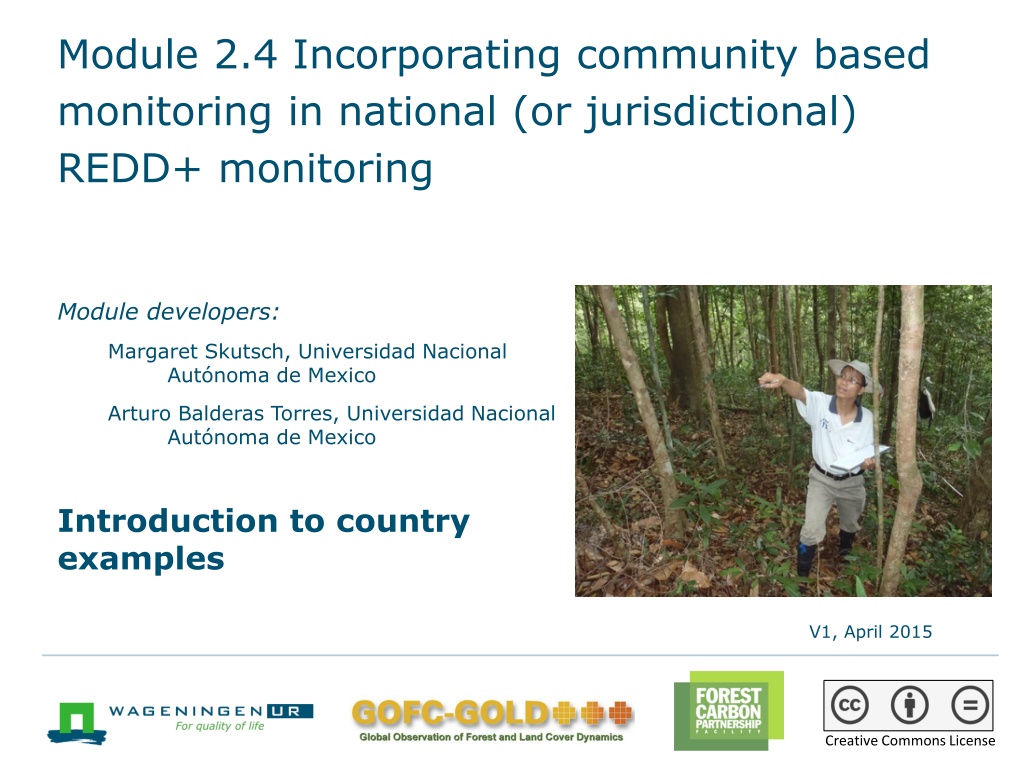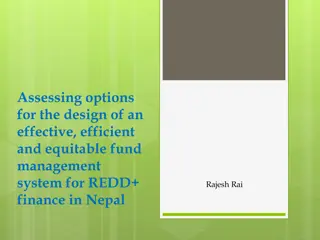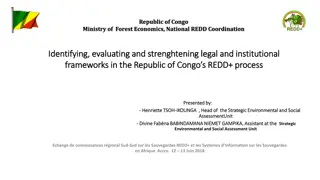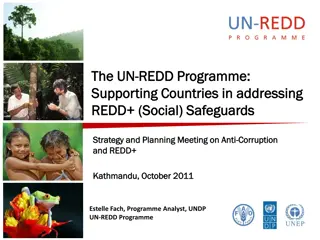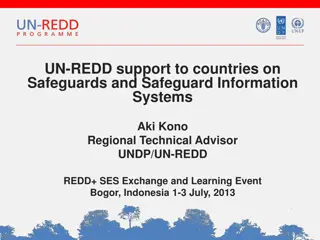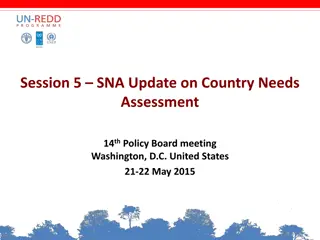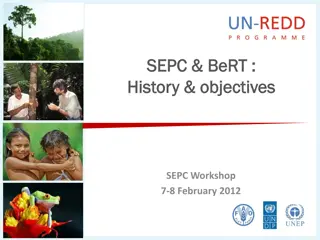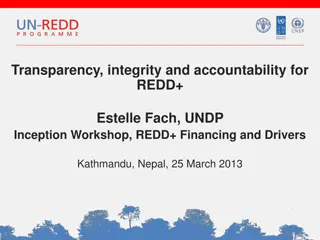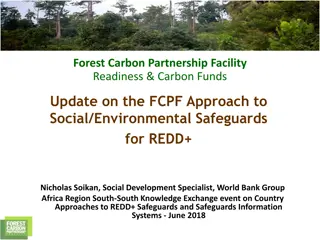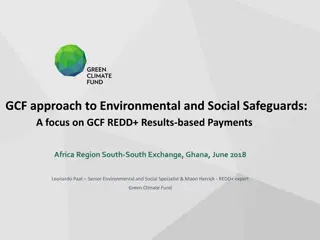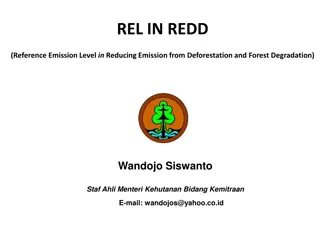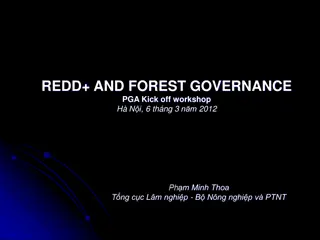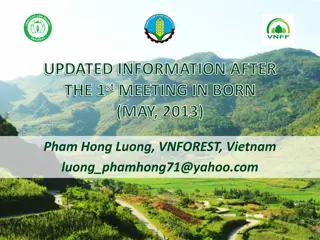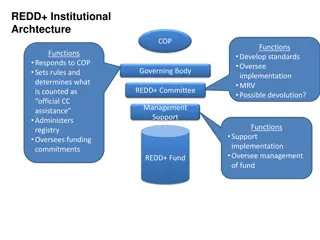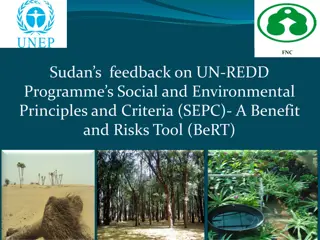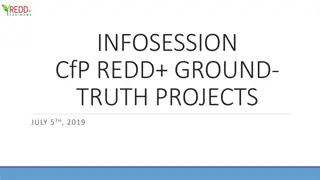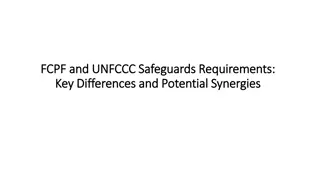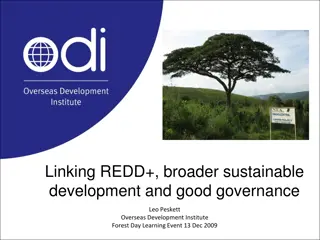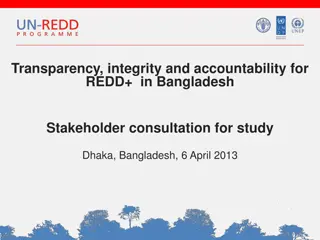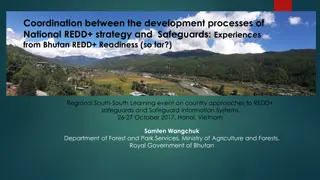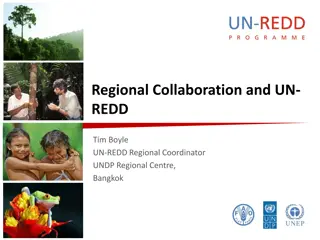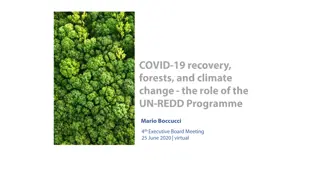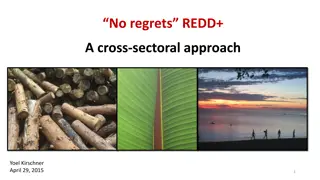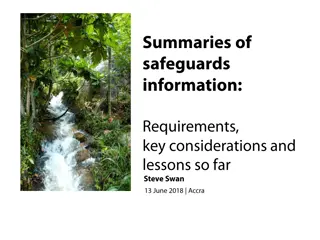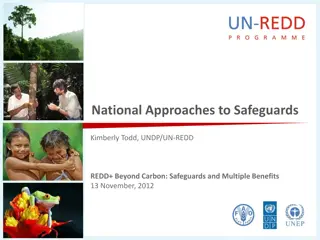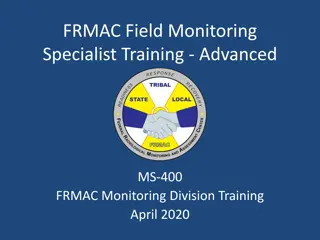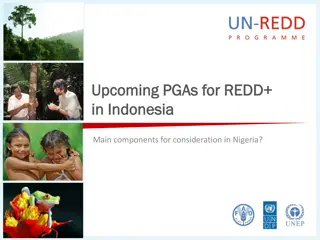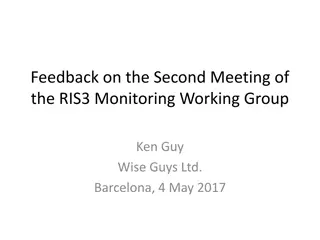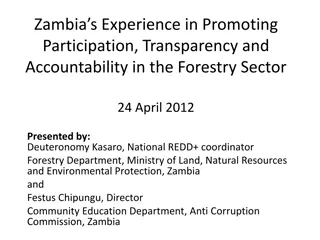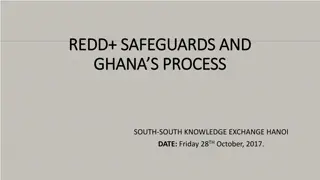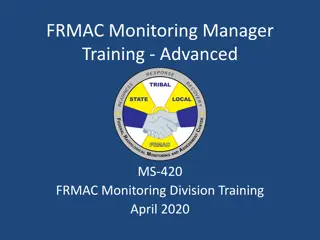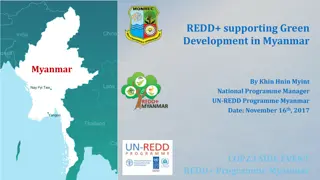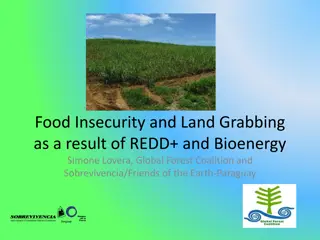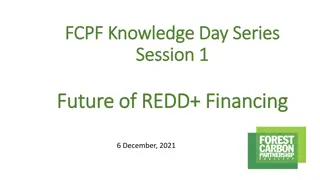Community-Based Monitoring in REDD+ Programs: Lessons and Implementation
Explore the incorporation of community-based monitoring in national REDD+ initiatives through case studies from Nepal, Guyana, and Vietnam. Gain insights on monitoring approaches, technologies, data integration, and social implications for effective forest monitoring and benefit distribution.
Uploaded on Oct 03, 2024 | 0 Views
Download Presentation

Please find below an Image/Link to download the presentation.
The content on the website is provided AS IS for your information and personal use only. It may not be sold, licensed, or shared on other websites without obtaining consent from the author. Download presentation by click this link. If you encounter any issues during the download, it is possible that the publisher has removed the file from their server.
E N D
Presentation Transcript
Module 2.4 Incorporating community based monitoring in national (or jurisdictional) REDD+ monitoring Module developers: Margaret Skutsch, Universidad Nacional Aut noma de Mexico Arturo Balderas Torres, Universidad Nacional Aut noma de Mexico Introduction to country examples V1, April 2015 1 Module 2.4 Incorporating CBM in national (or sub-national/ jurisdictional) REDD+ monitoring REDD+ training materials by GOFC-GOLD, Wageningen University, World Bank FCPF Creative Commons License
Part 1:Introduction to country examples Most experience of community monitoring for REDD+ has been in the context of projects in the voluntary sector, not with national REDD+ programmes Most of the cases available explain how communities monitored their forests and some assess the accuracy and reliability of the methods used Few examples in which handheld electronic technology is being used at the community level, as proposed in this course 2 Module 2.4 Incorporating CBM in national (or sub-national/ jurisdictional) REDD+ monitoring REDD+ training materials by GOFC-GOLD, Wageningen University, World Bank FCPF
Introduction to country examples Limited information available on integration of locally collected data and remote sensing sources; or integration into national MRV systems and National Forest Monitoring System (NFMS) Very limited information available on how data from local monitoring might be used as the basis for the distribution of REDD+ benefits 3 Module 2.4 Incorporating CBM in national (or sub-national/ jurisdictional) REDD+ monitoring REDD+ training materials by GOFC-GOLD, Wageningen University, World Bank FCPF
Introduction to country examples Here we present a few cases of community level monitoring of biomass, to illustrate how this has been carried out in practice, and to show differences in approaches, in Nepal, Guyana and Vietnam 4 Module 2.4 Incorporating CBM in national (or sub-national/ jurisdictional) REDD+ monitoring REDD+ training materials by GOFC-GOLD, Wageningen University, World Bank FCPF
Part 2: Some lesssons learned We have considered the cases of various projects in Guyana, Nepal and Vietnam What can we conclude? Let us consider the following topics: Relation of local data monitoring to national monitoring systems Reliability of community monitoring Appropriateness of the technologies applied Social implications 5 Module 2.4 Incorporating CBM in national (or sub-national/ jurisdictional) REDD+ monitoring REDD+ training materials by GOFC-GOLD, Wageningen University, World Bank FCPF
Relation of local level monitoring to national MRV systems In none of the cases there was an attempt to link the data from CBM to national systems of MRV Why is this? Is it just a question of time, or is the data simply not compatible? In one or two projects, there have been attempts to link community gathered data with data from remote sensing, e.g. the SNV project in Vietnam found a good correlation between community data and SPOT data This indicates that community data should be compatible with data gathered by RS over larger areas What needs to be done to be more certain of this? 6 Module 2.4 Incorporating CBM in national (or sub-national/ jurisdictional) REDD+ monitoring REDD+ training materials by GOFC-GOLD, Wageningen University, World Bank FCPF
Reliability of community monitoring Several of the cases indicated that the results of CBM were accurate and reliable, and the Tra Bui project in Vietnam showed that the costs were much lower for CBM than for professional surveyors The SNV project showed that CBM data fitted well with SPOT data What further studies should be done to confirm this finding? Can we assume that CBM is accurate in all cases? What factors might lead to less reliability? 7 Module 2.4 Incorporating CBM in national (or sub-national/ jurisdictional) REDD+ monitoring REDD+ training materials by GOFC-GOLD, Wageningen University, World Bank FCPF
Appropriateness of technology In almost all of the projects, hand held technologies similar to those we have presented in the main part of the module have been used (smartphones or tablets) In some cases, paper copies were taken in addition, to check the reliability of data entry Interestingly it seems people are very familiar with how to operate such devices in one of the Vietnam cases, 60% of the population had mobile phones (though perhaps not smart phones) There is some evidence that local people find GPS devices difficult to use; With smartphone the problem is avoided since the application can be used directly 8 Module 2.4 Incorporating CBM in national (or sub-national/ jurisdictional) REDD+ monitoring REDD+ training materials by GOFC-GOLD, Wageningen University, World Bank FCPF
More on technology. In selecting handheld technology, size and brightness of the screen, battery life, durability and robustness seem to be the most important criteria Extra batteries may be essential, and solar chargers could be useful In dense forests there may be problems of connectivity (for the GPS function) There may also be problems of rain and keeping the equipment dry What other difficulties might be encountered with this kind of equipment? 9 Module 2.4 Incorporating CBM in national (or sub-national/ jurisdictional) REDD+ monitoring REDD+ training materials by GOFC-GOLD, Wageningen University, World Bank FCPF
Social implications Questions may arise about who should be selected as a member of the monitoring team If selection for the team implies also payment for the work, there will be competition for positions and the risk of elite capture There is always a risk that if a small team is created, some if not all members will have disappeared from the community by the time of the second monitoring. On the other hand if the entire community is trained, they will not have had sufficient practice to carry out the survey. How can this problem be resolved? 10 Module 2.4 Incorporating CBM in national (or sub-national/ jurisdictional) REDD+ monitoring REDD+ training materials by GOFC-GOLD, Wageningen University, World Bank FCPF
